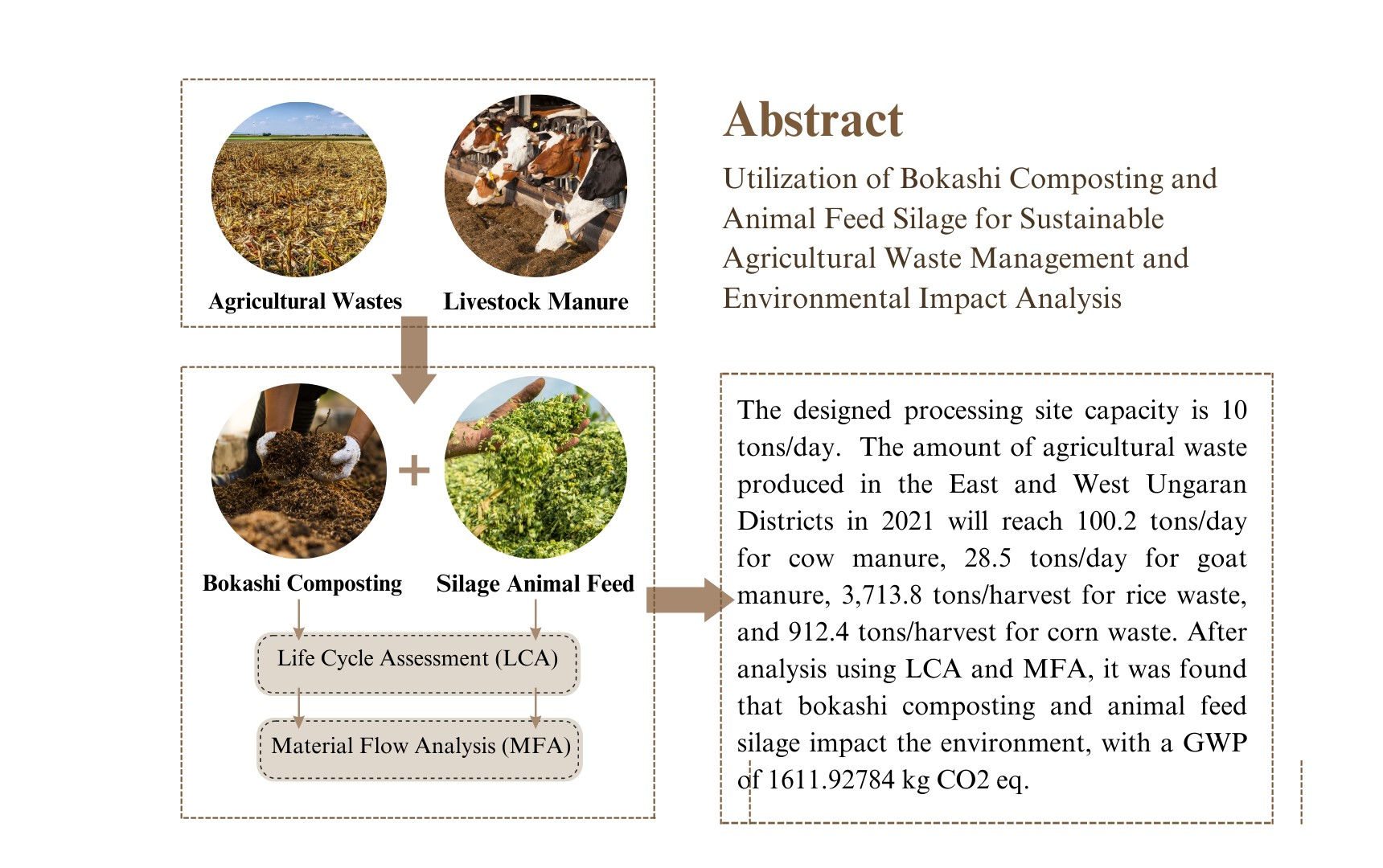
Agriculture is a major driver of sustainable development in developing countries. However, with the increase in the global population, the amount of waste generated by agriculture has also increased, leading to environmental pollution. The increase in agricultural activity is proportional to the increase in livestock activity. As livestock production increases globally, increasing amounts of manure are produced. Out of the many methods for processing agricultural waste, only a few prioritize aspects of soil quality in the agricultural environment and can be used to improve crop quality. This paper presents a utilization and recycling method using bokashi composting and silage animal feed, and the environmental impact of these methods. The analysis was performed using Material Flow Analysis (MFA) and Life Cycle Assessment (LCA). The number of sites and site locations was calculated based on the number and location of existing farmer groups. Future bokashi composting and animal feed silage are expected to be utilized by more people, given their small environmental impact and improved soil and crop quality. In addition, further research needs to discuss this method to optimize the increased utilization of agricultural waste.
Total file downloads: 16